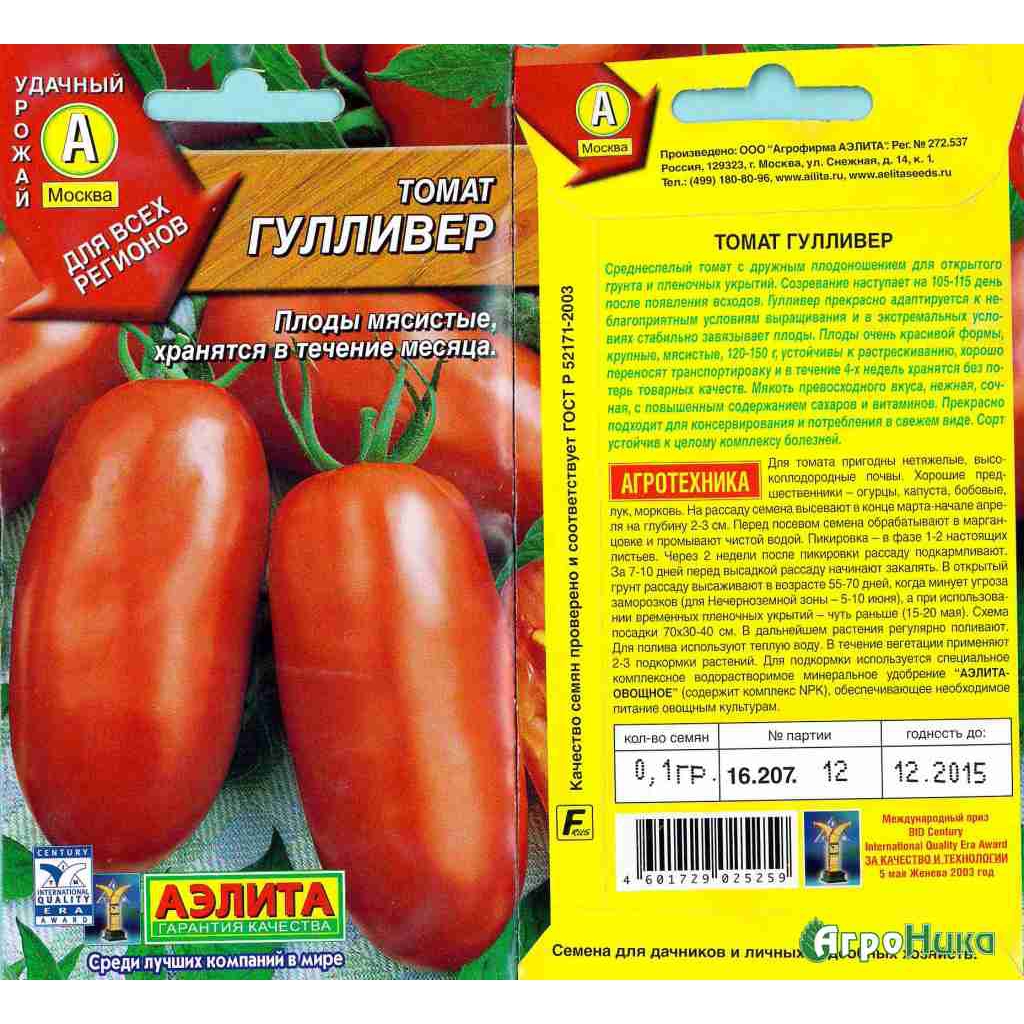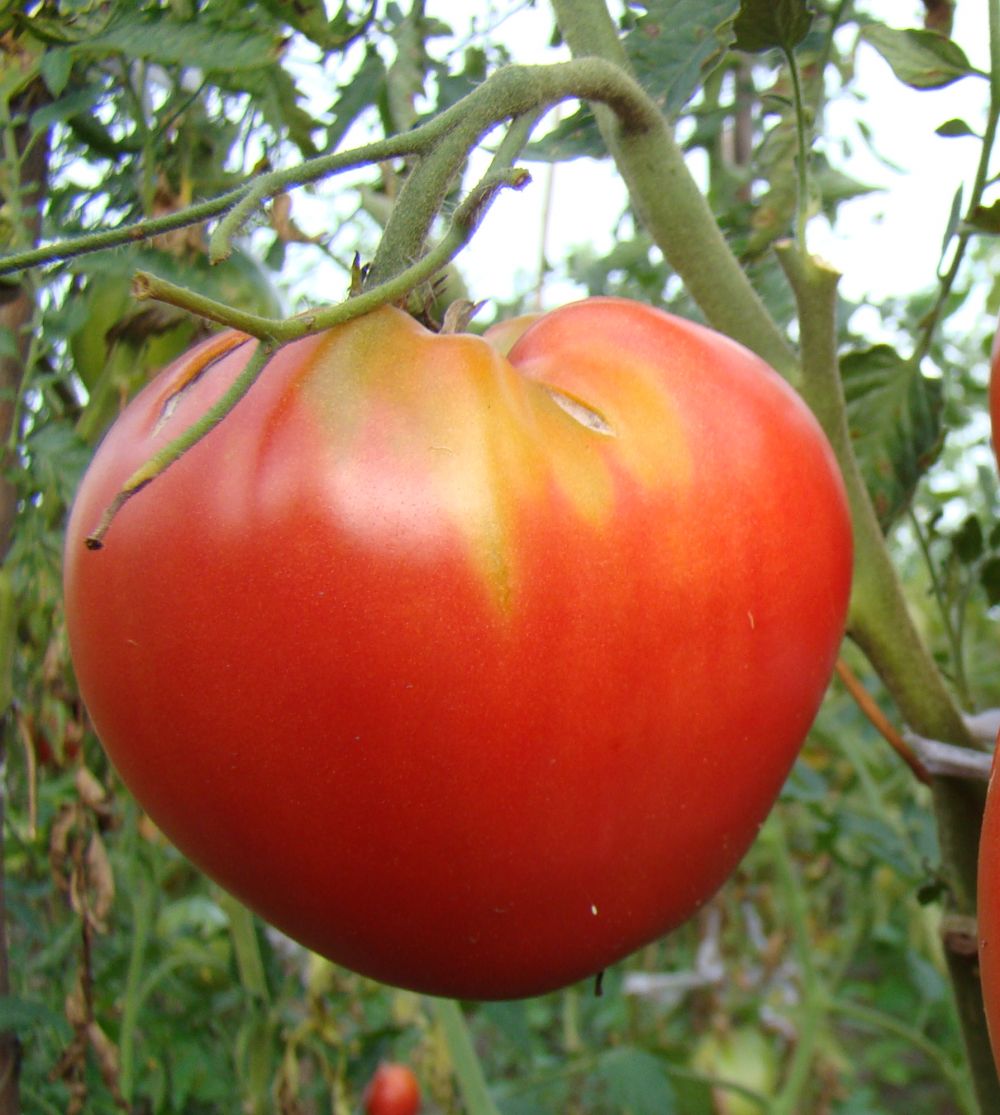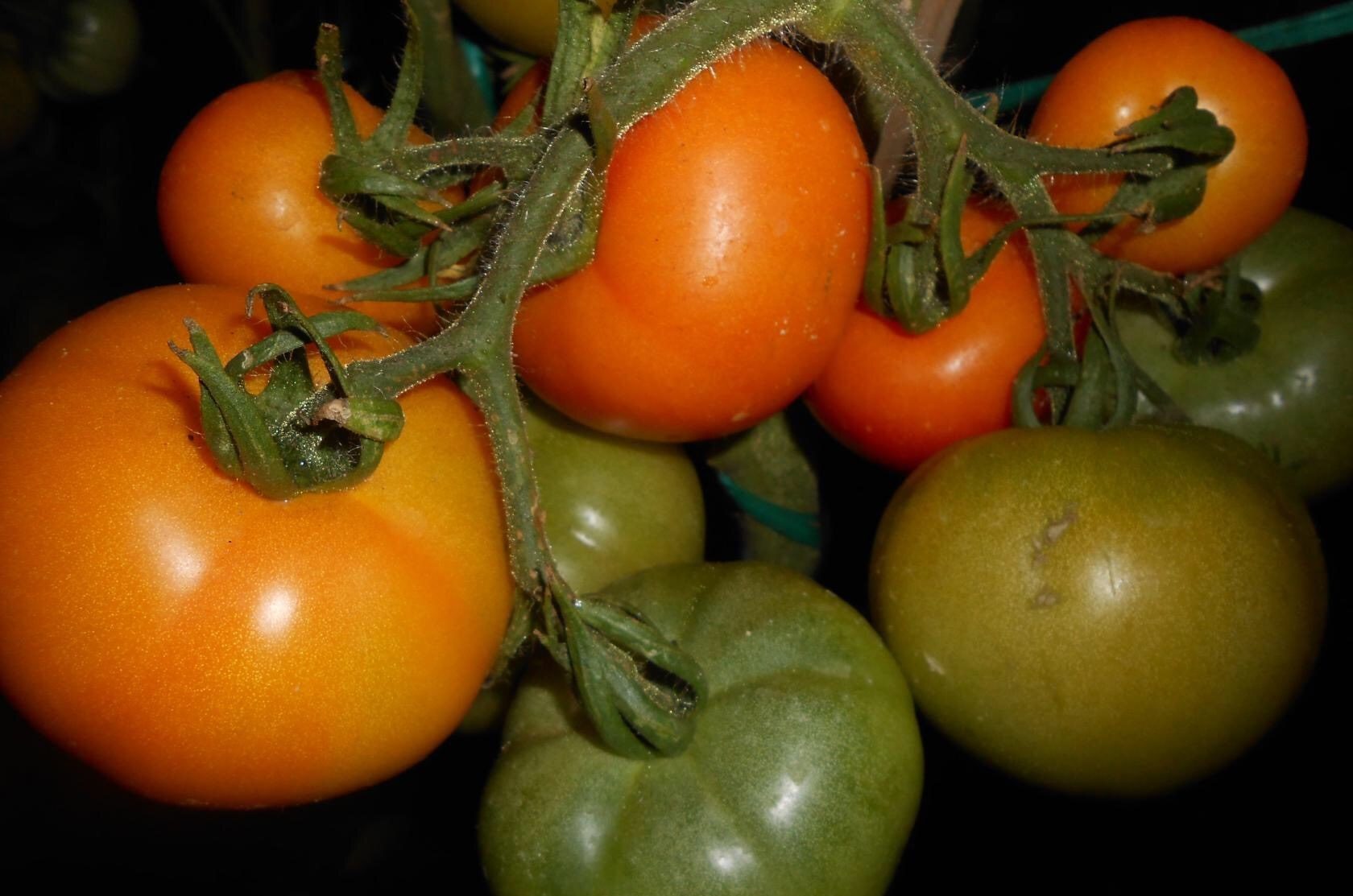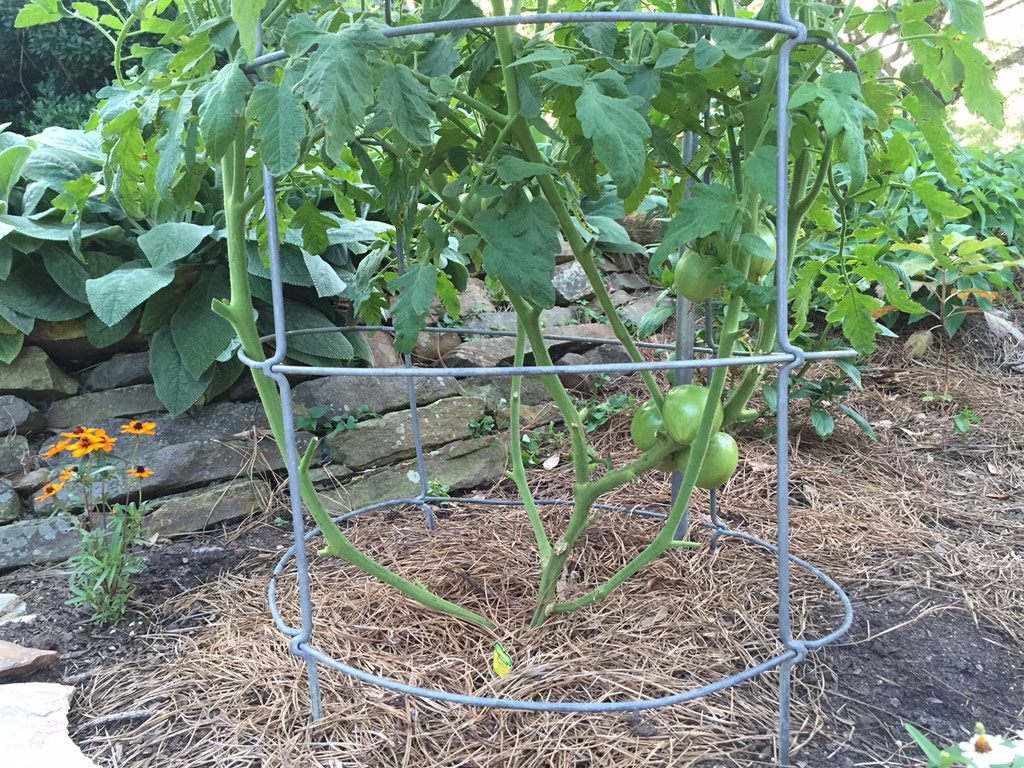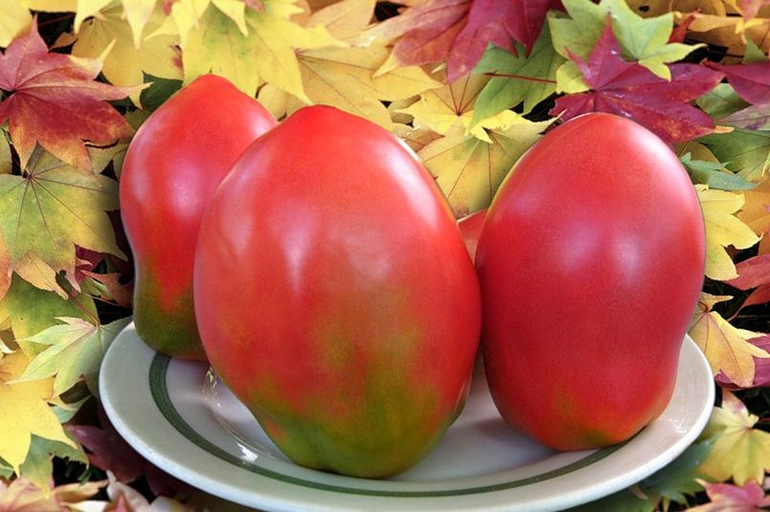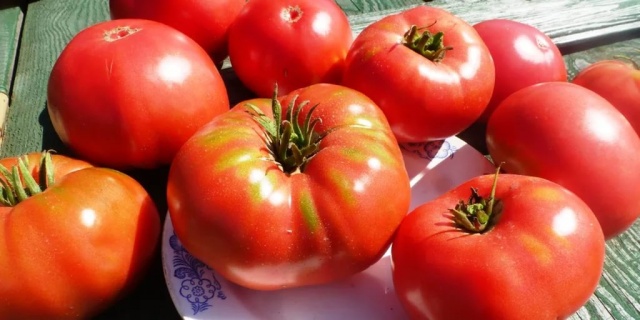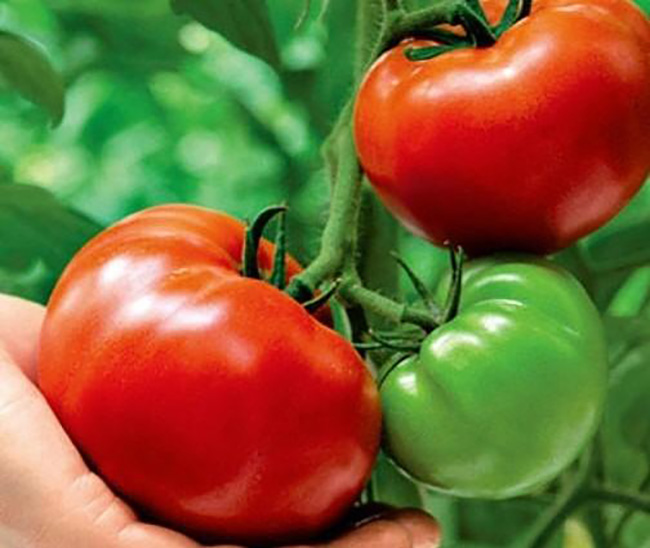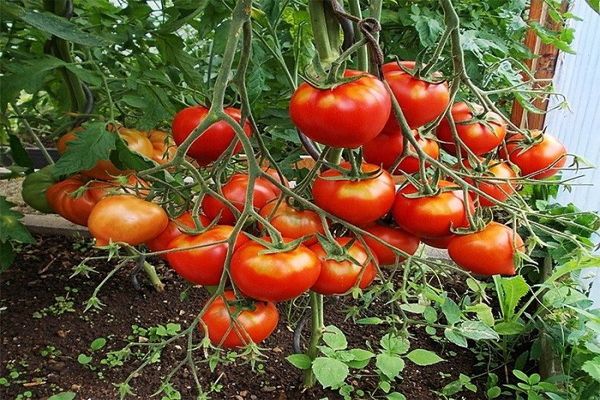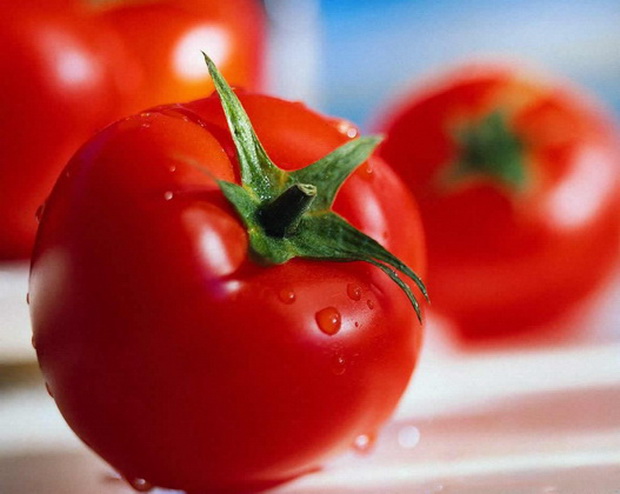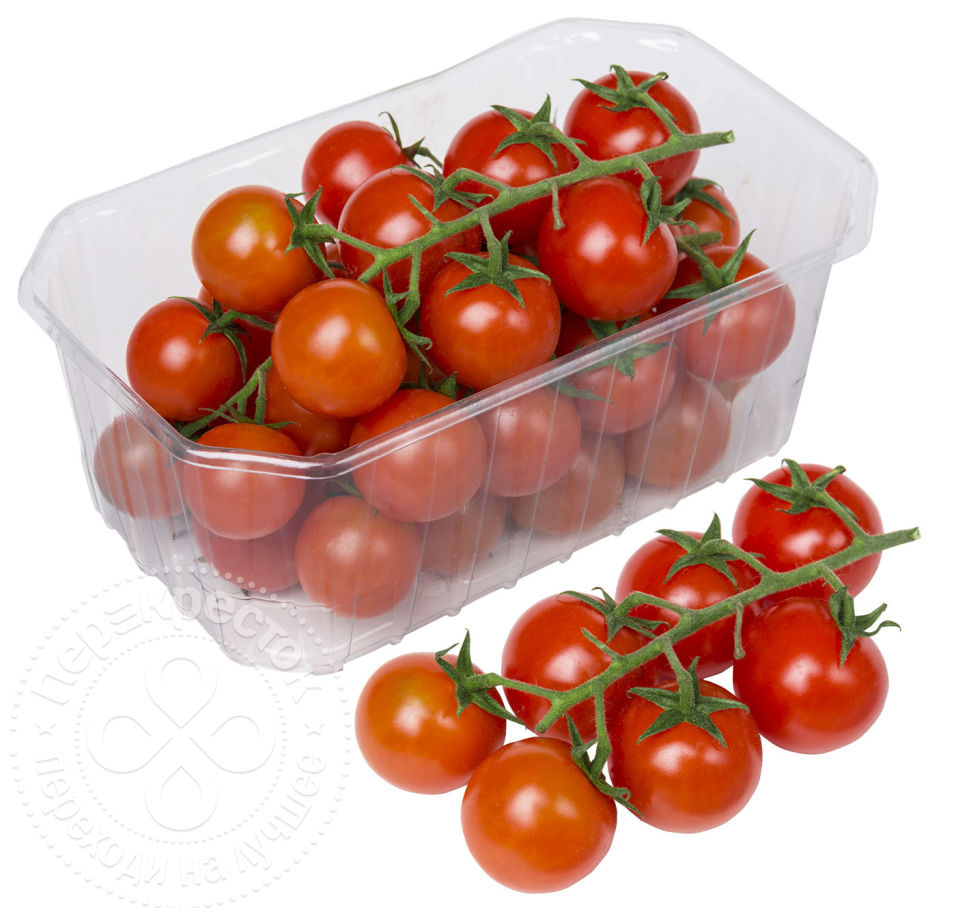Content:
Fruitful varieties of tomatoes have always been appreciated by gardeners. Gulliver tomatoes belong precisely to this type of tomato - they have the property of amicable ripening, and are also well suited both simply for eating and for winter harvesting. The variety is intended mainly for greenhouses, but in regions with a warm climate, it can be planted in open ground, a little later than other varieties.
Even under extremely unfavorable weather conditions, Gulliver's tomatoes are capable of adaptation, and full-fledged fruits are tied on them. They are resistant to drought and heat, and cope well with lower ambient temperatures.
Variety history
Tomatoes were bred by the breeder Myazina L.A. Having passed the test in the Central Black Earth Region, the Gulliver variety appeared in the register of vegetable crops in 2009.
Tomato Gulliver: characteristics and description of the variety
Despite the fact that the variety appeared quite recently, it is already in demand due to its characteristics:
- The bush can grow up to 1.5 meters in height with an average amount of foliage;
- Does not require pinning;
- Need a garter immediately after planting due to the weight of the hands;
- Clusters with simple inflorescences usually have 5 or 6 fruits. They have a cylindrical shape and reach 12 cm;
- Fruits at maturity are bright red saturated color;
- Fleshy fruits, almost without liquid;
- Tomatoes do not crack;
- Fruits have a small amount of seeds;
- Tomatoes are dense, the skin is thin, but not torn;
- Fruit weight - about 100 g;
- Productivity - up to 4 kg per bush;
- When describing Gulliver tomatoes, a not too high yield is noted, which is compensated by the universal use of the fruits. It is good to cook salads from them, cut them on the table. Juice does not expire;
- A great option for canning. Even when exposed to boiling water, these tomatoes do not crack.
Features of agricultural technology
Gulliver is grown by the seedling method, and the seedlings when planting must be at least 50 days old. It is on this parameter that gardeners are mainly guided, since in different areas these tomatoes are transferred to the beds or under the film at different times. You can also resort to using the lunar calendar.
The soil, as well as for planting other varieties and crops, can be purchased in stores, or you can prepare it yourself. The main factors here are soil fertility, its looseness and air permeability. The soil is prepared from the sod layer of the earth, with the addition of compost or humus and wood ash. After that, the soil is spilled with boiling water with diluted manganese in a weak concentration.
In a container with soil, grooves are made at a distance of 3 cm from each other and seeds are placed in them every 2 cm.The depth of the groove should be no more than 2 cm.
A film is stretched over the landing container for a greenhouse effect.
How to care for seedlings
- When shoots appear, and this usually happens on days 4-5, the film is immediately removed so that the seedlings do not stretch out. It is necessary to lower the temperature for a few days and increase the lighting. Seedlings are watered when the earth dries up;
- After the appearance of two true leaves, a pick is made. Then the seedlings are shaded for a while, and when they take root, they can be exposed in a sunny place, for example, on a window. To get strong seedlings, sprouts of Gulliver tomatoes periodically turn their different sides to the sun, and watering at this time requires moderate;
- Like any other seedlings, hardening is necessary for this variety. At first, air baths take only 20-25 minutes and gradually increase in time. It is not necessary to harden in direct sunlight to avoid plant burns. The apartment can use a balcony for this purpose.
Outdoor seedling care
It is best to prepare seedling beds from the fall, adding mineral fertilizers and organic matter to the soil. Before spring planting, the soil is dug up and watering is done.
The Gulliver variety is determinant, the best planting pattern is 70 by 45 cm.A peg for a garter is immediately installed next to the tomato, having a height of at least 1 m 80 cm.
It is necessary to observe certain care of plants in order to get a decent harvest.
Proper care means the following:
- Hilling tomatoes for the first time should be done 10 days after they are planted. This procedure should be repeated every two weeks;
- The root system of Gulliver tomatoes must be constantly monitored. The soil around the roots should always be loose. Loosening is recommended immediately after watering;
- Also an important aspect in the care is the regular removal of inflorescences in the sinuses. Before that, it is imperative to form on the bush from 1 to 3 branches;
- Watering is done as the soil around the plants dries up. Tomatoes are not recommended to be watered with cold tap water. For proper watering it is necessary to use warm water, better heated in the sun, for example, in a barrel. Watering tomatoes in the evening.
Bush formation
The bush should be formed into two stems, this reduces the load, but does not reduce the yield. Ripe fruits are best picked when the weather is dry.
Diseases of the variety
If Gulliver's tomatoes are planted too densely, viral and fungal diseases can occur, although the variety is resistant to them. To prevent this from happening, you need to remove the lower leaves and apply mulching.
It is good to spray plants at a young age with a weak solution of potassium permanganate, as well as phytosporin and preparations containing copper in their composition.
If the plants are affected by aphids, they are washed with soapy water. In the greenhouse, spider mites and thrips may appear, the prevention of which is constant ventilation and weed removal. If a tick appears, then insecticides are used to combat it.
Advantages and disadvantages
Gulliver's tomato has a number of undeniable advantages:
- According to its original characteristics, Gulliver's tomato is an early-ripening variety. In the State Register, the ripening period is slightly longer than the one declared by the originator, this not too large spread is explained by different climatic conditions in different regions;
- Ripe tomatoes are dense and fleshy, so you can transport them without any problems;
- They lie well, while their presentation remains for more than a month;
- Excellent taste and beautiful shape of the fruit. Tomatoes are versatile for their intended purpose, suitable for conservation;
- This variety is not too picky about care, according to experienced summer residents. No need to pinch, but only tie up;
- Grown both outdoors and indoors, without loss of yield. You can get seeds, as the variety is not a hybrid;
- Gulliver tomatoes show decent resistance to a large number of diseases, for example, apical rot and late blight;
- The fruits ripen together, hold well on the bush and do not crumble. Bad weather conditions do not affect fruit setting;
- They tolerate drought and heat, as well as temperature changes.
Of the shortcomings, they note the frequent garter of lashes that have begun to bear fruit, as well as poor pollination in greenhouses in rainy weather.
Despite all the seeming simplicity of the process of growing tomato fruits, growing a good harvest is not always an easy task for a gardener. It is necessary to strictly observe the necessary conditions for the plants to develop correctly. But, if everything is done correctly, in the end there will definitely be a decent harvest of tomatoes.
